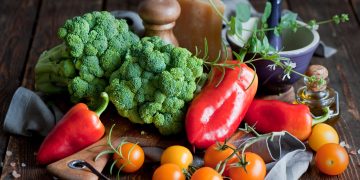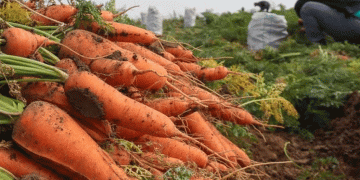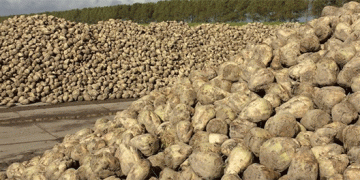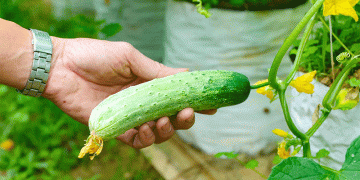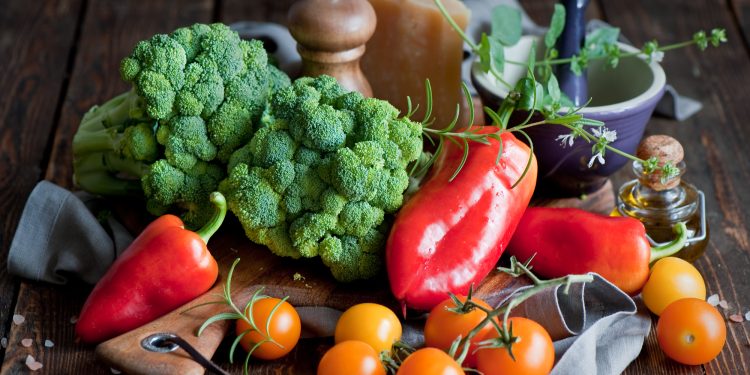Farmers did not really complain about the weather in the last agricultural season. Well, yes, spring lasted a little longer and May turned out to be cold, which is why the sowing campaign started too late. But they dropped out, and quite successfully. But the summer, to the delight of farmers, was kind. Even though the rains in September did not give a break, the equipment was stuck in the fields, but everything that they could was pulled out, removed, and put into storage. It’s time to sum up the results.
Much more than the occasional weather troubles, our farmers were worried that the planned plans were put at risk because of the sanctions pressure. And this is on the eve of a big agricultural disaster. Investments in the industry decreased, interest rates on loans increased, machinery and spare parts, fertilizers and chemical plant protection products, seed and planting material became more expensive…
But, in fairness, state support was not long in coming. The government has introduced credit holidays for farmers, extended short-term preferential loans, provided new subsidies and grants for both agricultural enterprises and farms. It is possible to list support measures further, but it is clear even without enumerations: all of them in this difficult time have become a serious support for the agro—industrial complex of the country as a whole, for agricultural producers of the Leningrad region in particular.
As a result, the support of regional farmers in the outgoing year increased to 7.3 billion rubles. Over the ten months of 2022, the region produced agricultural products totaling 99.3 billion rubles ‑ 2.4% higher than last year’s level.
The agro-industrial complex of the Leningrad Region is based on three sectoral pillars: animal husbandry, crop production and poultry farming. There is a priority in animal husbandry — milk. In the structure of gross agricultural output, it occupies 20%.
According to the volume of dairy production, the region has settled in the top ten Russian regions. And for a long time it remained in the first place in terms of cow productivity — in other words, in terms of average yields from each cow. The failure happened only last year, when, due to an abnormally hot summer, high milk yields could not be counted on.
This year, however, everything returns to normal. According to forecasts, the total gross milk production in LenAPK will amount to 660 – 665 thousand tons. At the same time, each cow will give an average of 9375 kilograms of milk. In the leading breeding farms of the region, this figure has exceeded the mark of 14 thousand. For comparison: the average productivity of Russian cows is projected at the level of 6900 – 7000 kilograms.
The second LenAPK branch whale works for animal husbandry — crop production. There are, of course, fields where commercial potatoes are grown. There are fields where representatives of the “borscht set” — cabbage and carrots – are successfully cultivated. By the way, this year both potatoes and cabbage with carrots gave very good harvests and positive production volumes: potatoes — 75 thousand tons; vegetables — 74.5 thousand tons. The increase is 15% of both. But on a national scale, this is a drop in the bucket.
Most of the farmland is allocated for the feed needs of livestock. Perennial and annual grasses are grown on them, which then go to the production of coarse and juicy feeds. There is feed grain here. Its production this season has reached a record 171 thousand tons — almost 32 thousand more than the previous year.
Rapeseed production has also increased — by almost 90%. Special attention to rapeseed is understandable: in the crop industry of the region, it is the main oilseed crop that gives high-protein feed.
As a result of all foraging efforts this year, 36 quintals of so-called conventional fodder units were stored for each head of cattle in the region. Simply put, these reserves will be enough for a year and a half of a well-fed life of regional cows. Well, where there is a well-fed life, there are high yields.
If we return to vegetables, then LenAPK remains a traditionally strong player in the vegetable growing of the closed ground. Salads alone in the greenhouses of the region are grown all year round more than two dozen species. And there are also leading crops — tomatoes and cucumbers.
Here an innovation was outlined: greenhouses reduced the volume of growing long—fruited cucumbers and large-fruited tomatoes, replacing them with “small-sized” gherkins and cherry tomatoes. We have too few sunny days, and just bright days. Not counting, of course, the period of white nights, but it’s so short…
A greenhouse vegetable requires illumination. The longer it grows, the more light it needs. It’s a costly business. The “small stuff” matures faster.
But even the transition to gherkins and cherries did not reduce the total production of greenhouse vegetables. This year’s grossing is approaching 100 thousand tons.
Meanwhile, LenAPK’s crop production has grown into a sub—branch – gardening. Young orchards of the region began to bear fruit even earlier, but the time to talk about tangible harvests has come only now.
This year we have collected about 600 tons of fruits and berries. Raspberries alone yielded 160 tons, strawberries slightly lagged behind — 150 tons, and there were also currants, plums, cherries. Not to mention apples and pears. All this is due to the commissioning of intensive type gardens. The weather in the berry field is made by the unique, in its essence, the only greenhouse farm in the Leningrad region (and so far in the whole of Russia), where raspberries are grown using innovative tunnel technology — under a film. In greenhouses, strawberries and strawberries are cultivated on special racks.
However, no one has canceled the traditional cultivation of berries in the open ground. The farming community is successfully engaged in this. Including in the north-eastern regions of the region, previously considered highly risky for capricious crops.
And finally, the third “whale” of the agro—industrial complex of the Leningrad region is poultry farming. This year, the laying hens of all poultry farms in the region should give out 3 billion 600 million eggs. Today, the leading egg factories “Roskar” and “Sinyavinskaya” are expanding their production. The Severnaya poultry farm is also increasing production. But she has another specialization — she grows broiler chickens for meat.
Last year, Severnaya put into operation a dozen and a half new poultry houses. This year, there was a return: production increased by 6%. They did not stop there — they flew on: new buildings are being built in the neighboring district, where the parent flock of the bird will be kept.
The long-suffering poultry farm “Russian—Vysotskaya” is also coming back to life – bankrupt, changing owners, standing on the threshold of complete liquidation… Now the eggs laid for incubation are “ripening” here, and in a couple of weeks the first batch of poultry will go to fattening. The design capacity of the poultry farm is 20 thousand tons of poultry meat per year.
“This year is one of the most successful for the agriculture of the region,” Oleg Malashchenko, chairman of the Committee on the agro—industrial complex, sums up. “Even despite the difficult economic situation in the country, we have created a reserve for the future in order not only to maintain production volumes of all major types of agricultural products, but also to increase them.”
A source: https://spbvedomosti.ru
